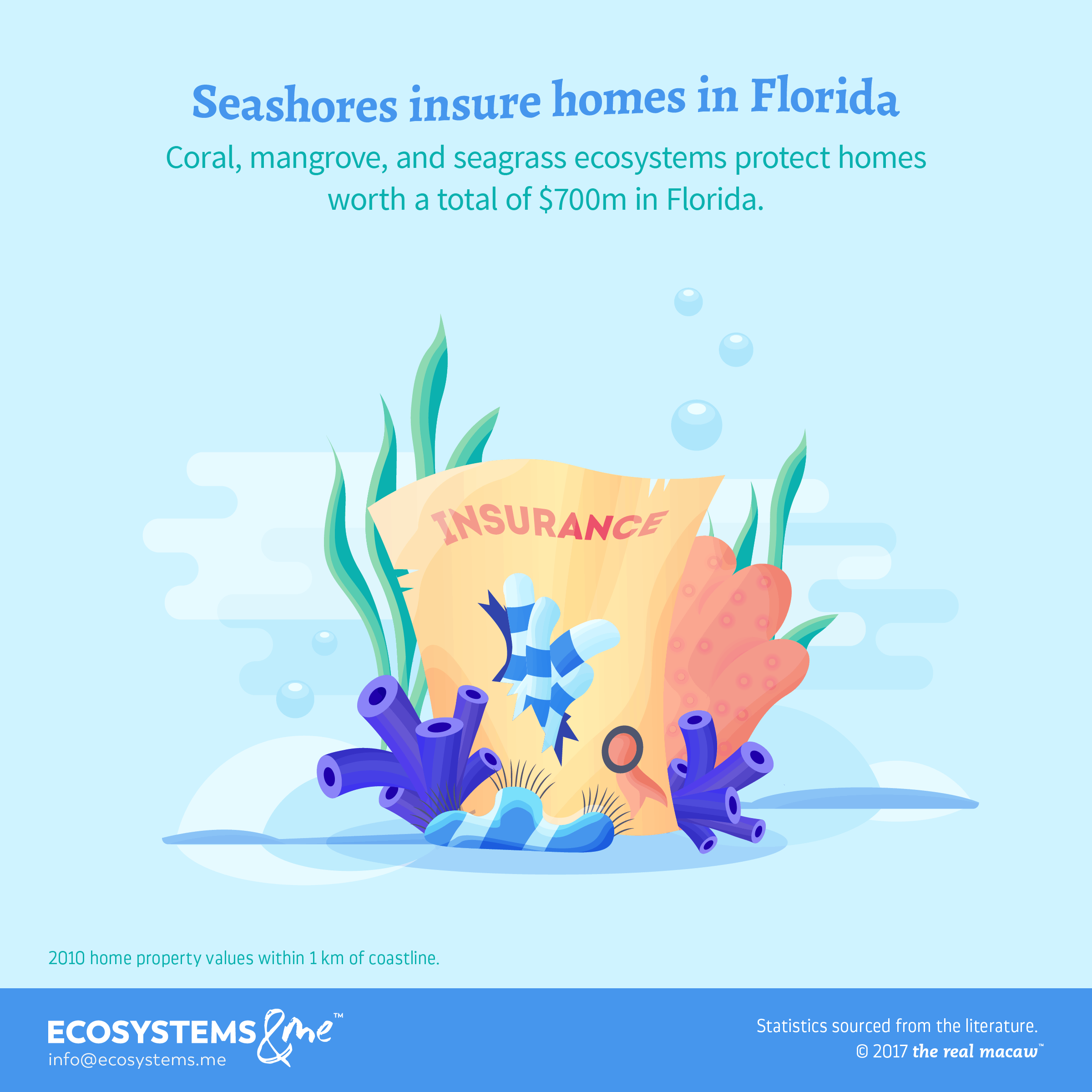
Looking for a beach house in Florida? Frustrated with insurance costs? You may want to consider finding one near some coral reefs, mangroves, or seagrasses. In Monroe County, home of the Florida Keys, these ecosystems reduce exposure to storms and sea level rise for homes worth $700 million in total.
Coastal ecosystems protect homes worth $700 million in the Florida Keys.
You probably already know the Keys are famous for their blue waters and coral reefs. But did you know they also have the world’s largest seagrass bed (here’s a handy map), and lots of mangroves? Those aren’t just floppy grasses and trees: they protect the coast – and you. To find out how, read on below.
How coastal protection works
Coral reefs act like a breakwater, reducing wave energy and height. And, since mangrove trees grow in saltwater, they have to adapt to ocean tides – so their root systems grow into a dense network which hosts many other aquatic plants. Unsurprisingly, they’re especially good at soaking up shifting water currents.
It’s worth noting that the contribution of mangroves and seagrasses to coastal protection can vary. Seagrasses are floppy, so they are a bit less effective, especially during an extreme event. But even so, they dampen strong currents. So all together, these coastal ecosystems do a lot to reduce the risks of flooding and storm surge. This is especially important, because sea-level rise make both of these worse.
Coral reefs reduce wave energy and height. Mangroves are really good at soaking up shifting water flows. And seagrasses dampen strong currents. Together, they keep Florida’s southern coast safer.
And these ecosystems are not just protecting beach houses: they’re also protecting the 77,000 or so people in Monroe County. Models can compare what would happen with and without the ecosystems, and if they disappear, the number of people exposed to these hazards in Florida would almost double by 2100.
For comparison, during Hurricane Irma in 2017, 30,000 people had to evacuate the Keys, and a quarter of its homes were destroyed (though this was likely also partly due to wind damage).
To be clear, coastal ecosystems can’t stop everything. Some storms will be just too strong, and some habitats will be overwhelmed by sea-level rise. But they definitely do help.
Free home insurance!
Because of wind, flood, and hurricane risks, Florida has some of the highest home insurance costs in the entire United States. Monroe County and the Keys, at the southernmost tip, are on the frontline. Which is why rates are much higher than in inland areas – for example, in Conch Key, insurance costs around $11,700 a year, on average. That’s not just the highest in the state, but the highest in the country!
And that’s just for home insurance: flood and wind insurance is extra. Meanwhile, in Tallahassee – much further inland – the average cost of insurance is around $1200 a year, just a tad higher than the national average. So, with Florida’s insurance costs already through the roof (pun totally intended), it’s worth leaning on everything we’ve got.
Sea-level rise makes the risk of flooding worse. Florida’s coastal ecosystems help to reduce it.
These stats are specific to the Florida Keys, but these types of coastal ecosystems generally provide similar protection wherever they are. And remember that Florida’s ecosystems do all of this just by existing. So if you’re thinking about protecting your home, don’t forget to take care of your seashore. It’s not just cheap insurance: it’s free. And it’s helping to keep you safe.
